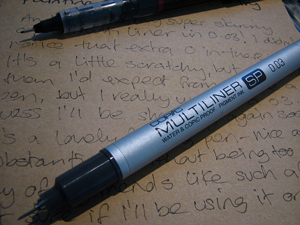
Source: mjc-2012-02-08-IMG_0980, wicked, Flickr
In this lesson, you will learn strategies for evaluating and revising the tone, style, and figurative language in an essay. Revising an essay with the goal of improving it involves two steps: (1) carefully rereading and reflecting on what you have written and (2) changing, correcting, modifying, and adjusting the writing where needed. In completing these two steps, you also need to keep your audience and purpose in mind.
Revision isn’t fixing spelling and punctuation mistakes. That’s proofreading. Revision literally means to “see again,” to look at something from a fresh, critical perspective. Revision involves strategies such as adding, substituting, and removing text to achieve your purpose and help your audience easily understand what you’re saying. You should be able to identify places in your draft where you added, substituted, or removed text to improve your essay.
You might be tempted not to revise, but the University of North Carolina Writing Lab staff tells students that “Writing is a process of discovery, and you don’t always produce your best stuff when you first get started.” They advise students to examine an essay by asking these questions:
- Is what I’ve written really worth saying?
- Is what I’ve written what I wanted to say?
- Will a reader understand what I’m saying?
The first two bullets address the purpose of your writing. The third bullet addresses your audience. We’ll talk more about purpose and audience in other lessons. You may be saying, “I’m in high school. I don’t need to do what college students do. I don’t need to revise,” but you will soon see that revising and polishing your work can really improve your writing!